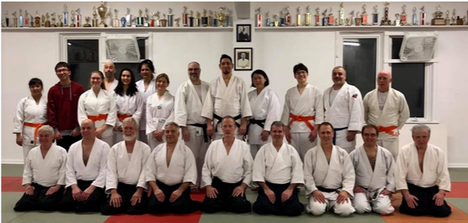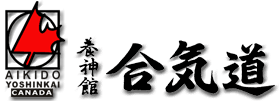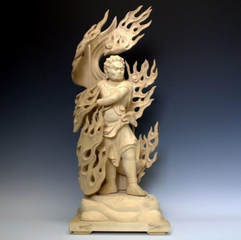
Chris Johnston Sensei and Paul Gagliano Sensei (Aikido Shindokan dojo) recently made a trip up to AYC Ottawa to deliver a Kigami Biraki clinic. Although I couldn’t join in the trip to visit Hans De Groot Sensei, the event inspired me to reflect on some of the clinics I've attended, with guest teachers from Vancouver, Spain, Australia, and Japan. I dusted off my notebook to see what I had learned about how to learn at these events.
1. Set your intention: There's often a long stretch between the day you decided to register in a clinic and the moment you step on the mats with a bunch of strangers and old friends. In that moment, it's easy to forget why you signed up in the first place. But there must have been a reason: what was it? Hoping to pick up a spectacular technique you saw on YouTube? Inspired to move the way the guest instructor moves, doing magical throws with crisp precision or a deceptively sleepy posture? Or was it just the opportunity to hang out with new people who love doing what you love doing? Figure out why the clinic matters to you. You can write it down or just carry it in your heart, but decide on a reason for being there. Be specific with yourself about what that intention is.
2. Stretch: This is basic, but it matters. In those 10 minutes before the session starts, warm yourself up. Who knows? The dojo you're visiting may have a different warm-up routine than what you're used to and might skip that one stretch your body desperately needs. Or, because time is always tight in a clinic, they may not do a warm-up at all. You’re stuck with your body, so be kind to it. Make sure you target the muscles that you know need the attention. It just might be the difference between you attending all the sessions you paid for and you sitting on the sidelines after the first class.
3. Take uke from the guest instructor: Some guest instructors will hand-pick a specific uke to help them demo a particular technique or principle. Often, though, there's a split second where the instructor is ready to go, and anyone can leap into the void. Be that training dummy. Decide ahead of time that you're ready to jump at the chance. It can be a terrifying idea: you’re on display, wondering if you can take whatever twist the instructor will dish out. But even if everyone's speaking the same language, something always gets lost in translation when technique is put into words. Feeling it from the expert is the best way to understand what you should be learning.
4. Play "Uke Bingo": No one wants to be the last kid on the wall when teams are picked. So don't wait. Tap someone on the shoulder and get to work. Play a little "Uke Bingo" by changing partners with each new technique, trying to hit all of these squares before the session is over:
- Work with a stranger: your dojo-mates might have been letting you slide with some sloppy habits. Someone who isn't used to working with you won't be in the habit of letting you cut those corners.
- Work with someone of the same rank: the higher you climb, the harder it is to find other people at your level in your own backyard. If you're a nidan or sandan, lower belt students might have been vulnerable to the “halo effect,” making you think you’re better than you are. Another nidan or sandan won’t be impressed by the black in your belt. The same principle holds true if you're still in the earlier kyu stages. It's not a competition, but you should test yourself by seeing if you really earned the same shade of green as a student from somewhere else.
- Work with someone whose rank is way different than yours: If you're of a higher rank, work with a "colour belt" for a technique or two. A beginning student won't fully grasp the principle being taught--which means they aren't just "going along with it." It's also a way to ensure that lower-ranked students are made to feel truly welcome at the event. And this cuts both ways. If you're still wearing a "colour belt," share your enthusiasm by asking a black belt if they mind working with you for a round. You might pick up something that you hadn't noticed when the guest instructor showed it. If the teacher really wants to separate the seniors and the juniors, they will.
- Work with different body types: unlike sport martial arts, aikido doesn't have weight classes or separation by gender. That's not by accident. Working with as many different shapes and sizes as you can lets you figure out the common denominators. It is these common denominators that make techniques consistent and reliable. This variability brings out the best in aikido: it prepares you for self-defense against a variety of attackers and, more importantly, reminds you how to get along with people who are different from you.
6. Ask Questions: Some people say that there are no stupid questions. They're wrong. There are stupid questions. But we don't really know which questions are stupid and which are useful until we start exploring the answers. And sometimes even the stupid questions lead to the best insights. Just remember, like everything in aikido, it's all about timing. Never interrupt a lesson. But if a teacher is giving you a personal correction and you don't quite get it, try asking for clarification. If that feels too bold, park your question. Most instructors make time at the end of a session or at the end of a clinic for anyone to ask about anything. And you may never have that chance again. So go ahead and look stupid. It may be the smartest thing you do in the whole clinic.
7. Reflect: Experts have plotted out the "forgetting curve," a graph that measures how quickly we forget what we've learned. When we don't review, that curve is scary-steep. Without review, we tend to forget 50% of what we learned over the next day or two. We forget another 48% or so the week after that. What good is a clinic if you don't learn anything? It's a waste of your money and disrespectful to the teacher who shared their wisdom. As soon as a session is over, before you even peel off that sweat-soaked gi, jot down some notes. It can be keywords or scribbled sentences, point-form or mind-maps. Then look at it the next day and fill in some of the gaps. Even if you never come back to the notes, the fact that you made them means that you've coded the ideas into your long-term memory. My own teacher makes notes at the start of class, during class, and at the end. And when the notebooks are full? He throws them away. It's the act of writing, not the written record, that encodes it in your mind.
Bonus Tip: Have fun. Yoshinkan Aikidoka don’t do tournaments, and most of us in the global community can’t travel to the annual demonstrations in Japan. A clinic is rare chance to reinvent yourself. So pick up something new, whether it’s a technique, an explanation, or a friend.
Contributed by John Corr,
Aikido Yoshinkai Canada
Hamilton, ON
Copyright © 2014-2019. All Rights Reserved.


 RSS Feed
RSS Feed